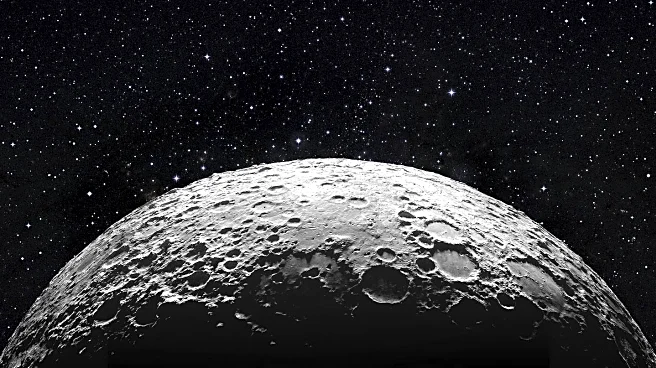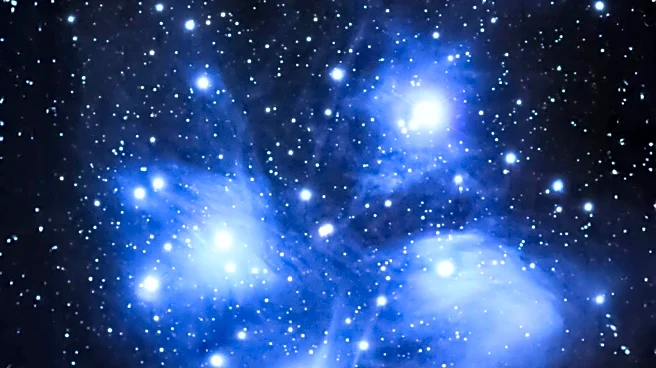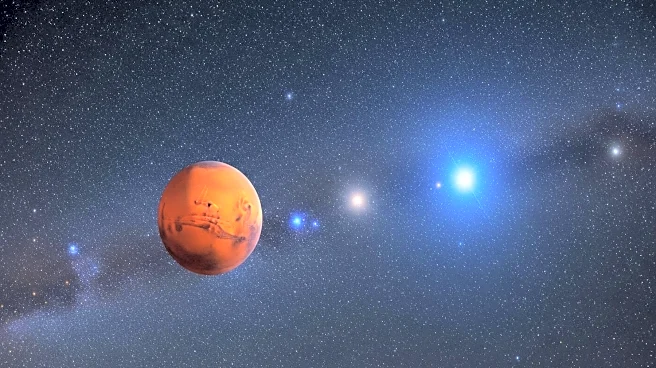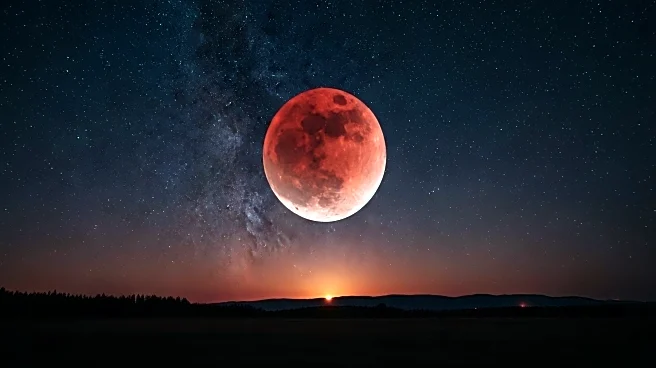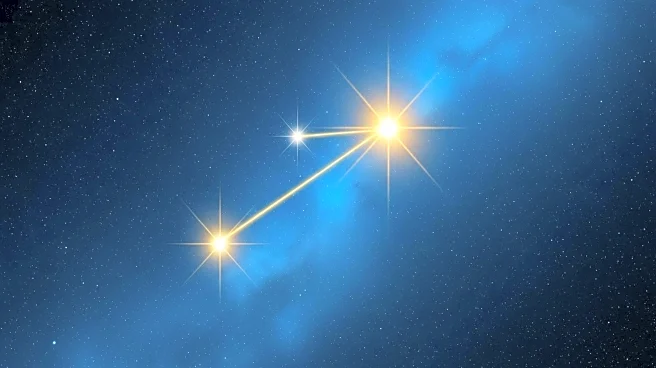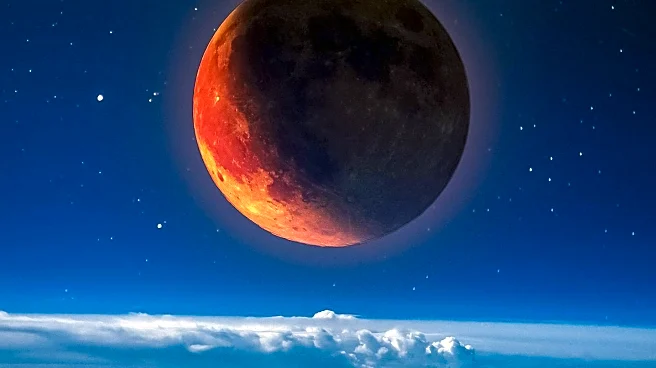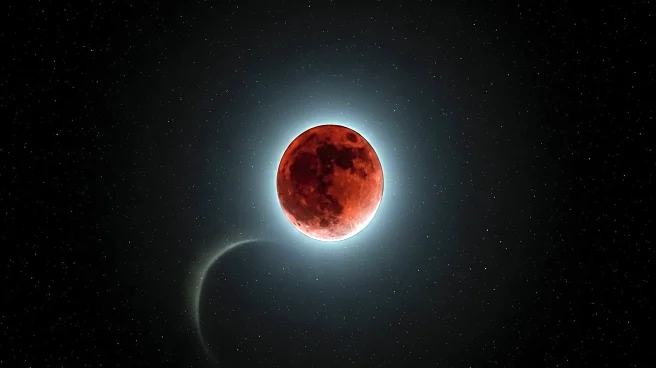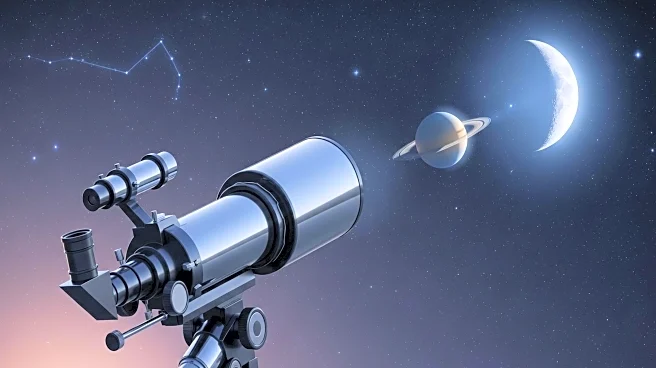What's Happening?
On the night of September 12, the waning gibbous moon will appear close to the Pleiades star cluster, with Uranus nearby in the constellation Taurus. The moon will rise above the eastern horizon about an hour before midnight, with the Pleiades less than 5 degrees to its upper right. The Pleiades, also known as the 'Seven Sisters,' is a prominent open star cluster visible to the naked eye from dark locations. However, the moon's brightness may make it challenging to see the cluster clearly. Binoculars or a telescope can enhance the viewing experience, revealing more stars and possibly Uranus.
Why It's Important?
This event is a notable opportunity for amateur astronomers and skywatchers to observe the interaction between the moon and a well-known star cluster. The Pleiades has been a subject of interest in various cultures and is often used as a marker for astronomical observations. Observing such celestial events can enhance public interest in astronomy and provide educational opportunities. It also highlights the importance of understanding celestial navigation and the movement of astronomical bodies.
What's Next?
Following this event, observers can continue to track the moon's movement across the sky and its interactions with other celestial bodies. The nights after September 12 will offer opportunities to observe the lunar surface and its features, such as the Montes Apenninus mountain range. These observations can contribute to a deeper understanding of lunar geography and the dynamics of the night sky.
